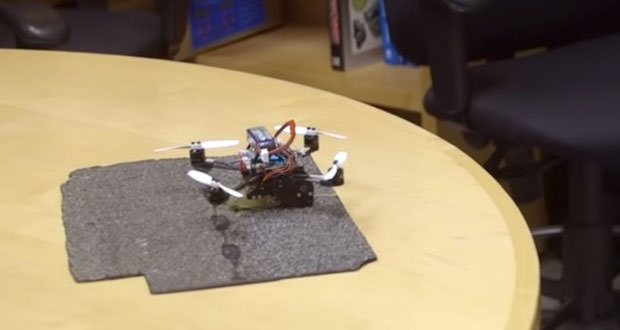From Stanford, here are the micro-drones able to move 40 times their weight
Thanks to special adhesive elements and a winch it was possible to realize small drones capable of carrying out tasks and moving loads.
Stanford researchers together with the EPFL in Switzerland have made some small drones equipped with a winch and able to move objects up to 40 times their weight, as well as perform some simple operations such as opening a door.
The key to the project was the use of exchangeable stickers on the basis of the drone, made up of micro-spikes capable of anchoring themselves in materials such as stucco, rugs or debris and from silky ripples (which imitate the morphology of the gecko’s feet) to cling on smooth surfaces such as glass.
Both structures can be attached to surfaces in one direction, so that they can be easily detached by moving them in the opposite direction. In this way the drones can drag well beyond their 100 grams of weight, exercising up to 40 newtones of force or enough to lift up to four kilograms.
As already mentioned, the project was inspired by nature, as Matthew Estrada, PhD candidate at the Stanford Biomimetics and Dexterous Manipulation Lab and co-author of the publication explains. Researchers have identified flying insects as the closest micro-drone equivalents, studying in particular wasps and their ability to move prey much heavier than them.
” Often the wasps want to grab large prey and transport them to their nest, but when they cannot fly with their load, they have to drag it along the ground, clinging with their claws and moving step by step ” the researchers explain, created the micro-drones – baptized FlyCroTugs – following the same principles.
The researchers then tried to use these robots to perform slightly more complex tasks of transporting objects. But the path has not been as linear as you could imagine: even for a simple operation such as opening a door it was necessary to make a hook that could be adapted to the door handle and correctly align the drones by performing maneuvers of several minutes.
However, it is a simple proof of concept, and the basic idea is to create small machines that not only fly, but are also able to manipulate objects. Economical micro-drone teams working together, for example, removing debris to make room for larger robots, for example: in case of disaster relief or disaster relief.

